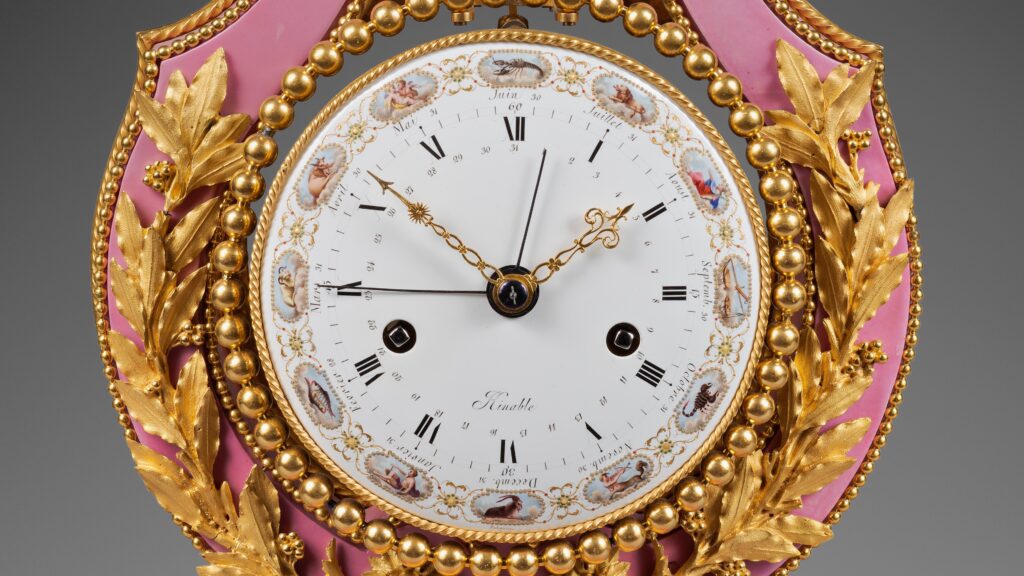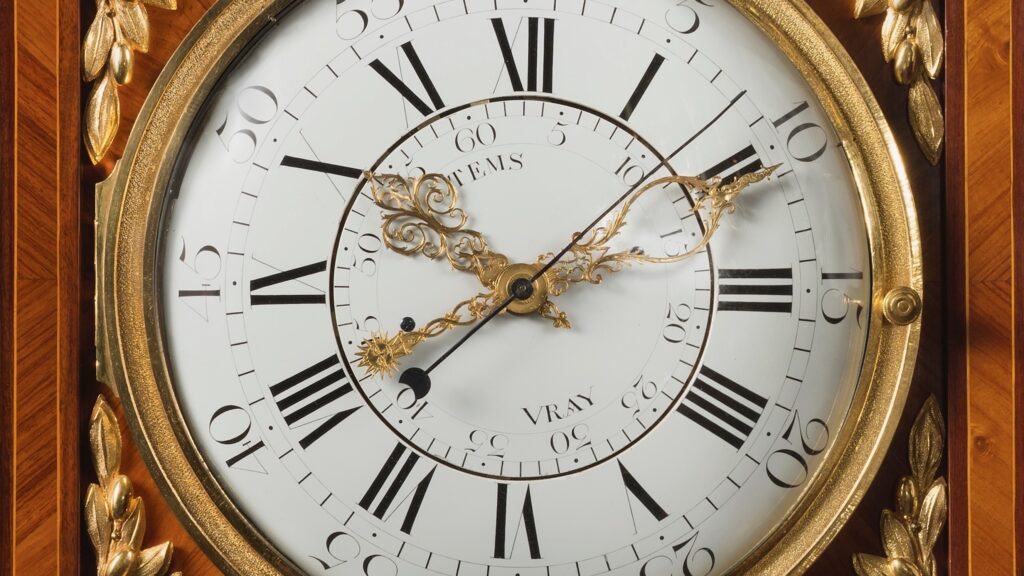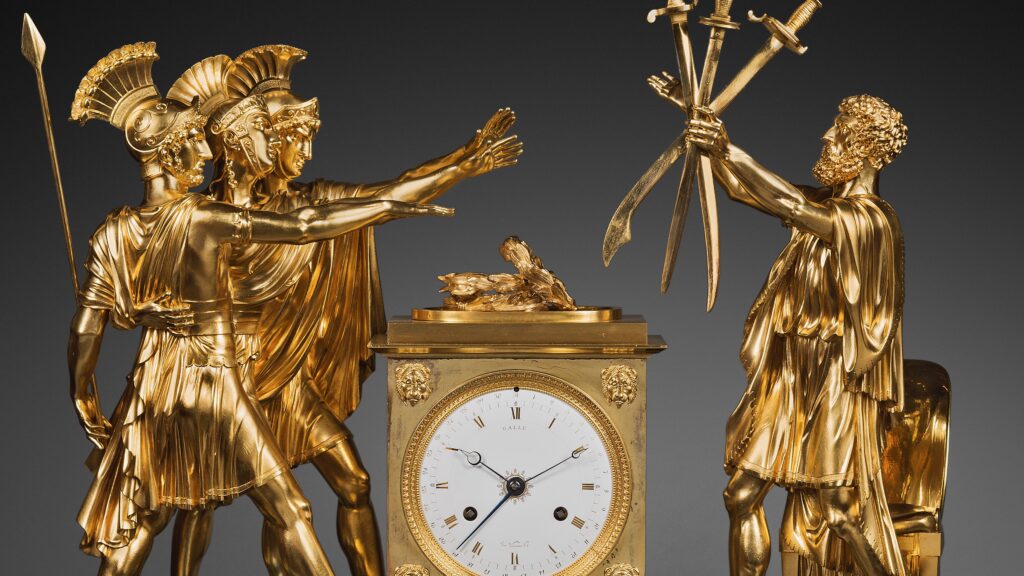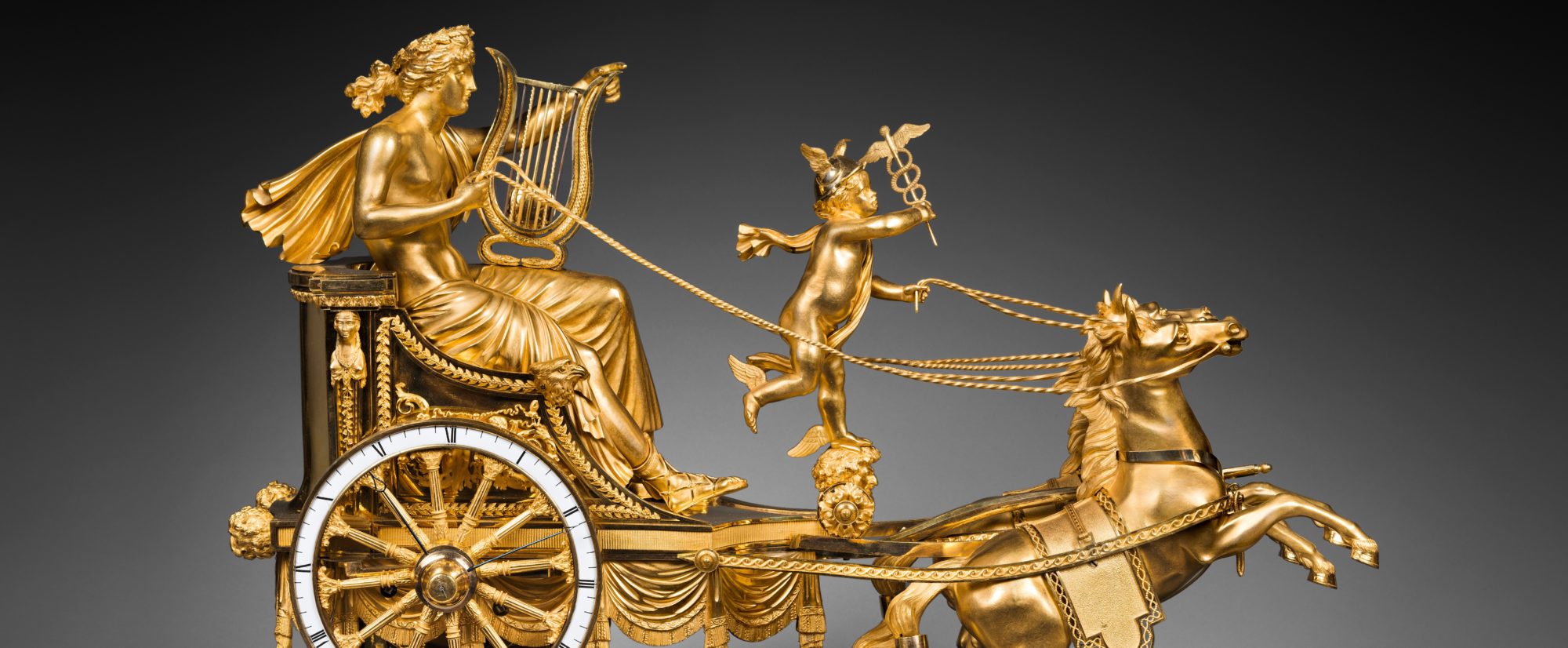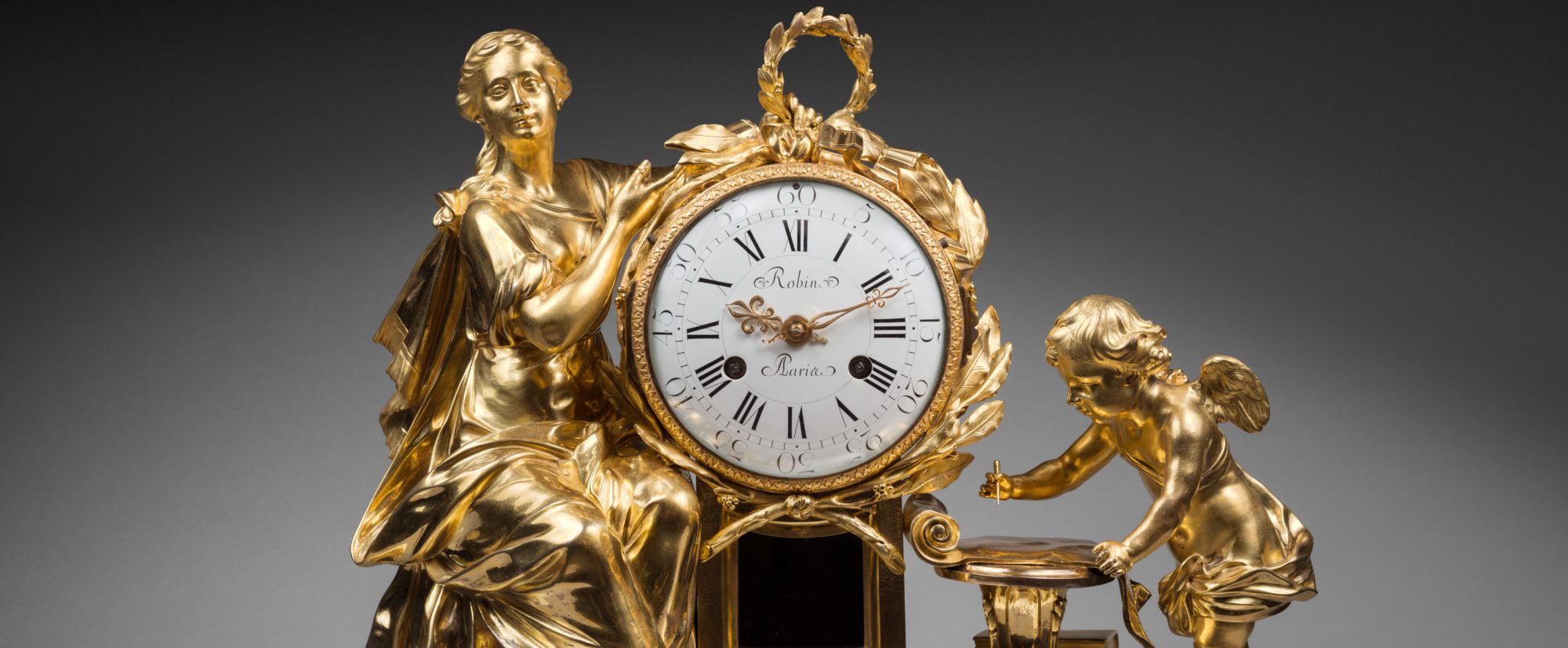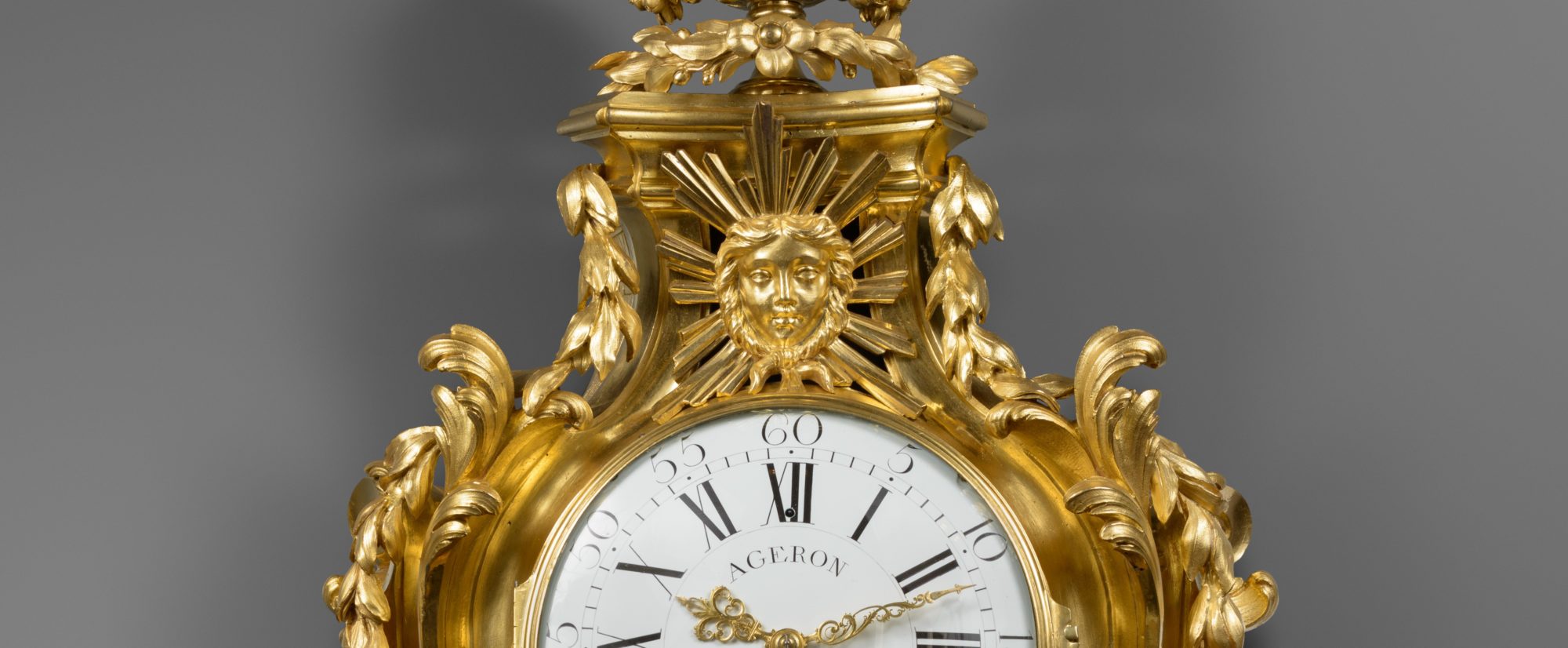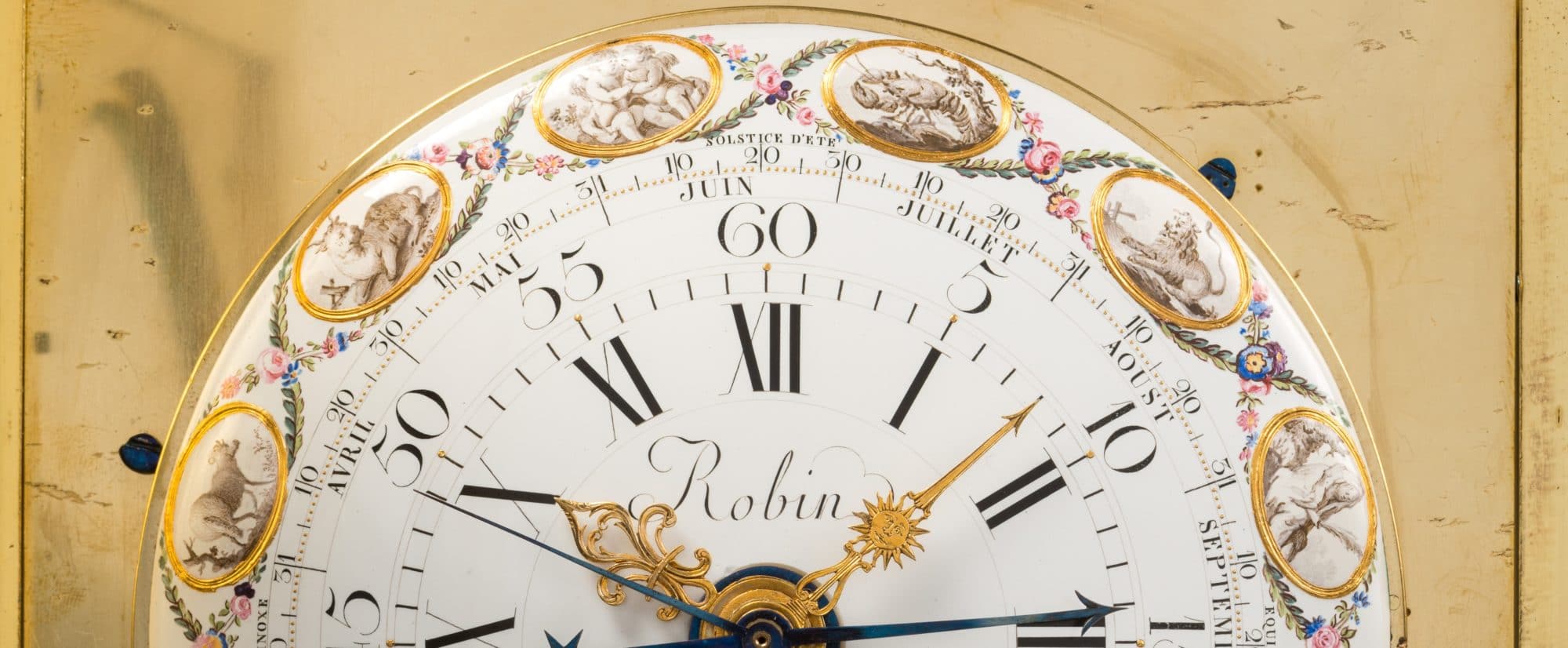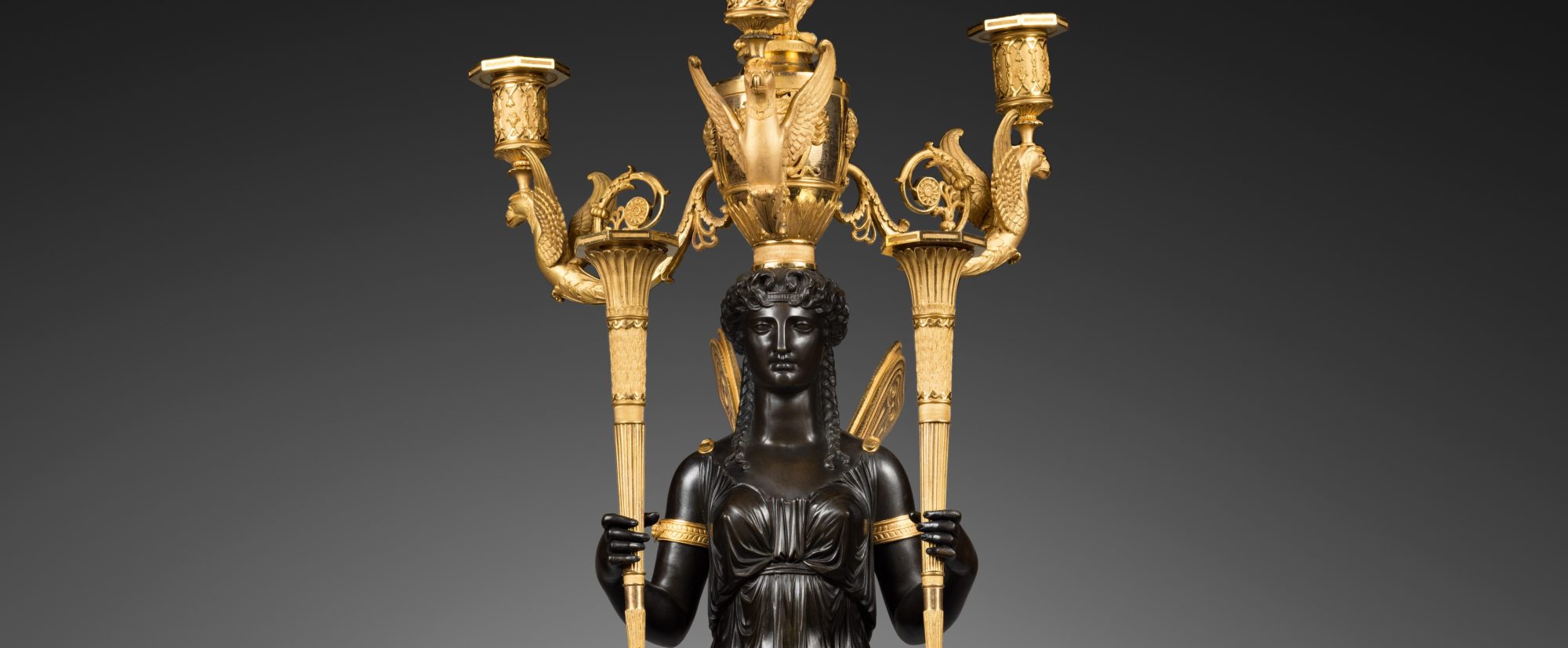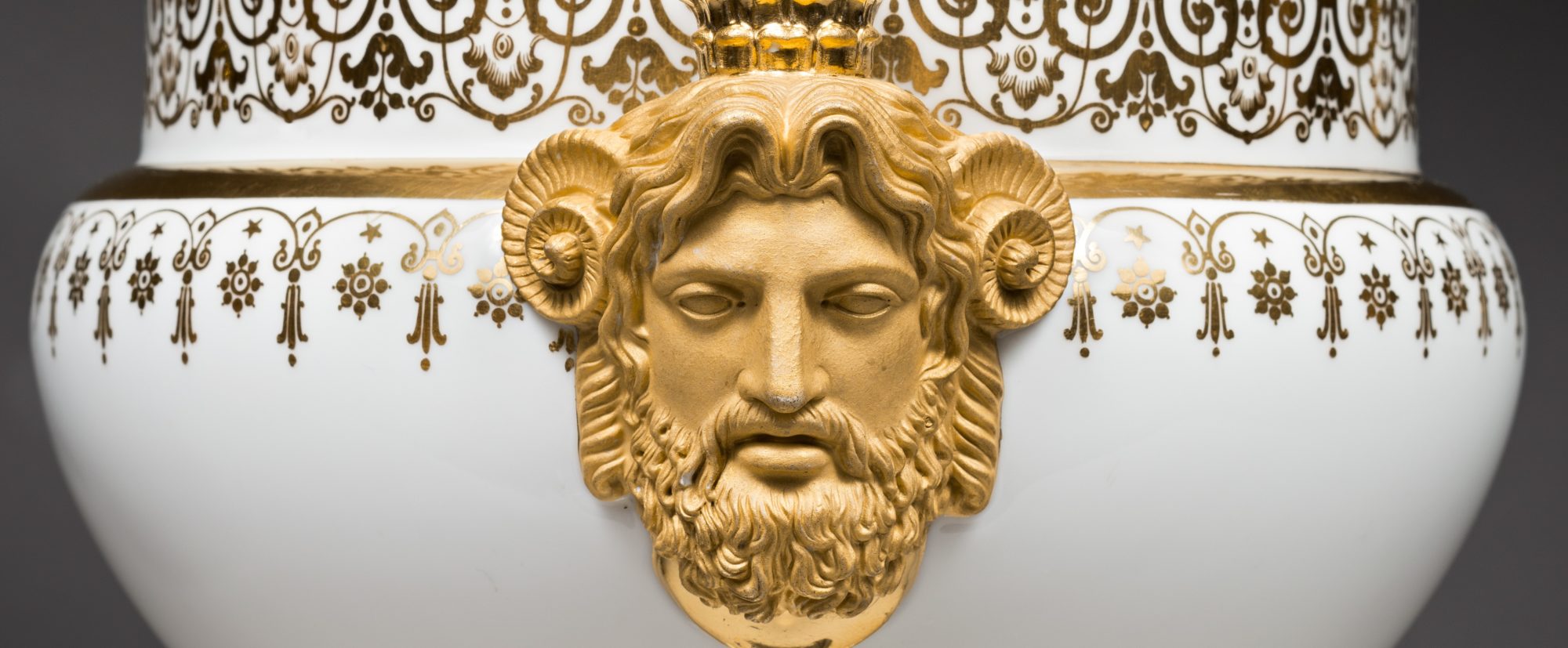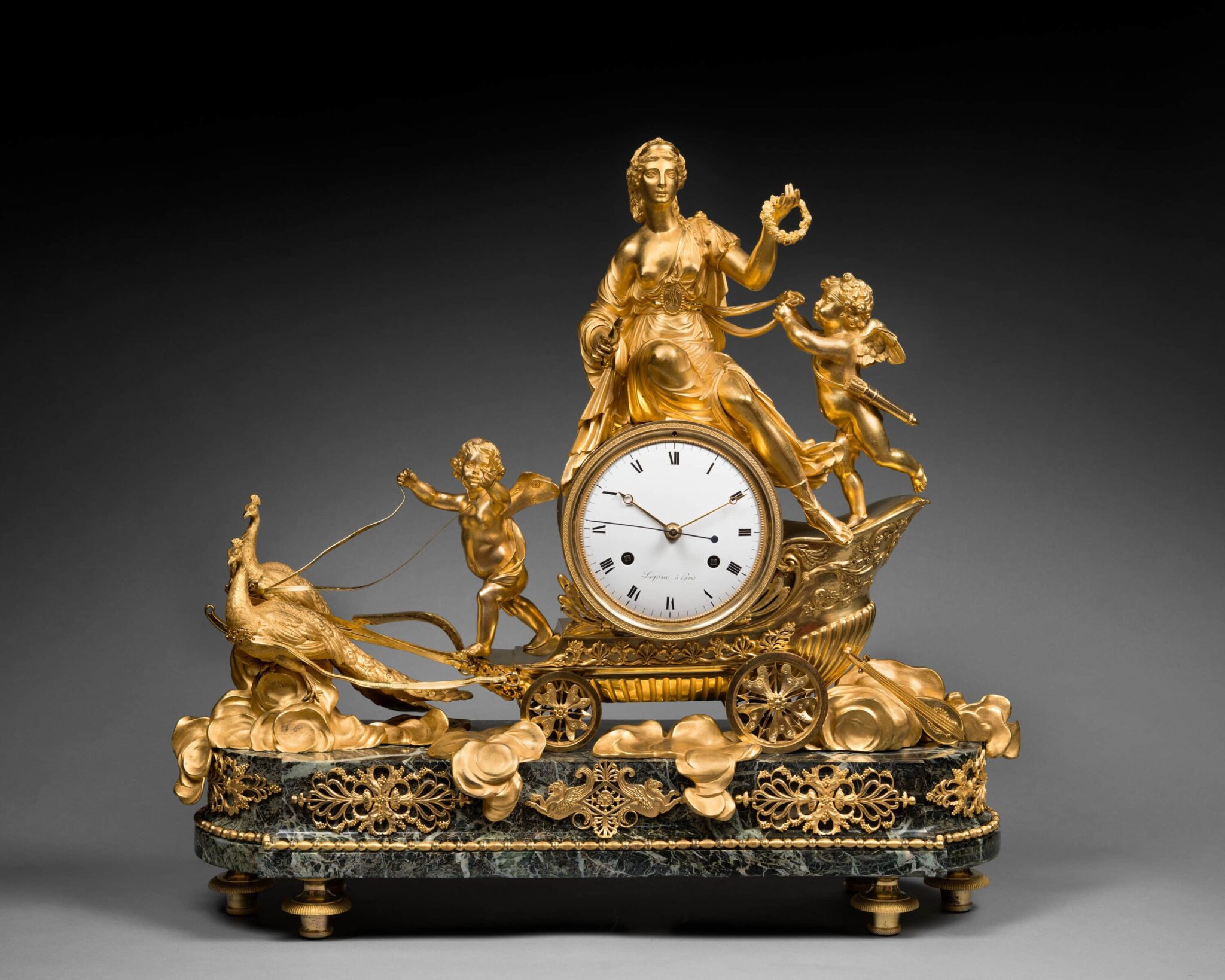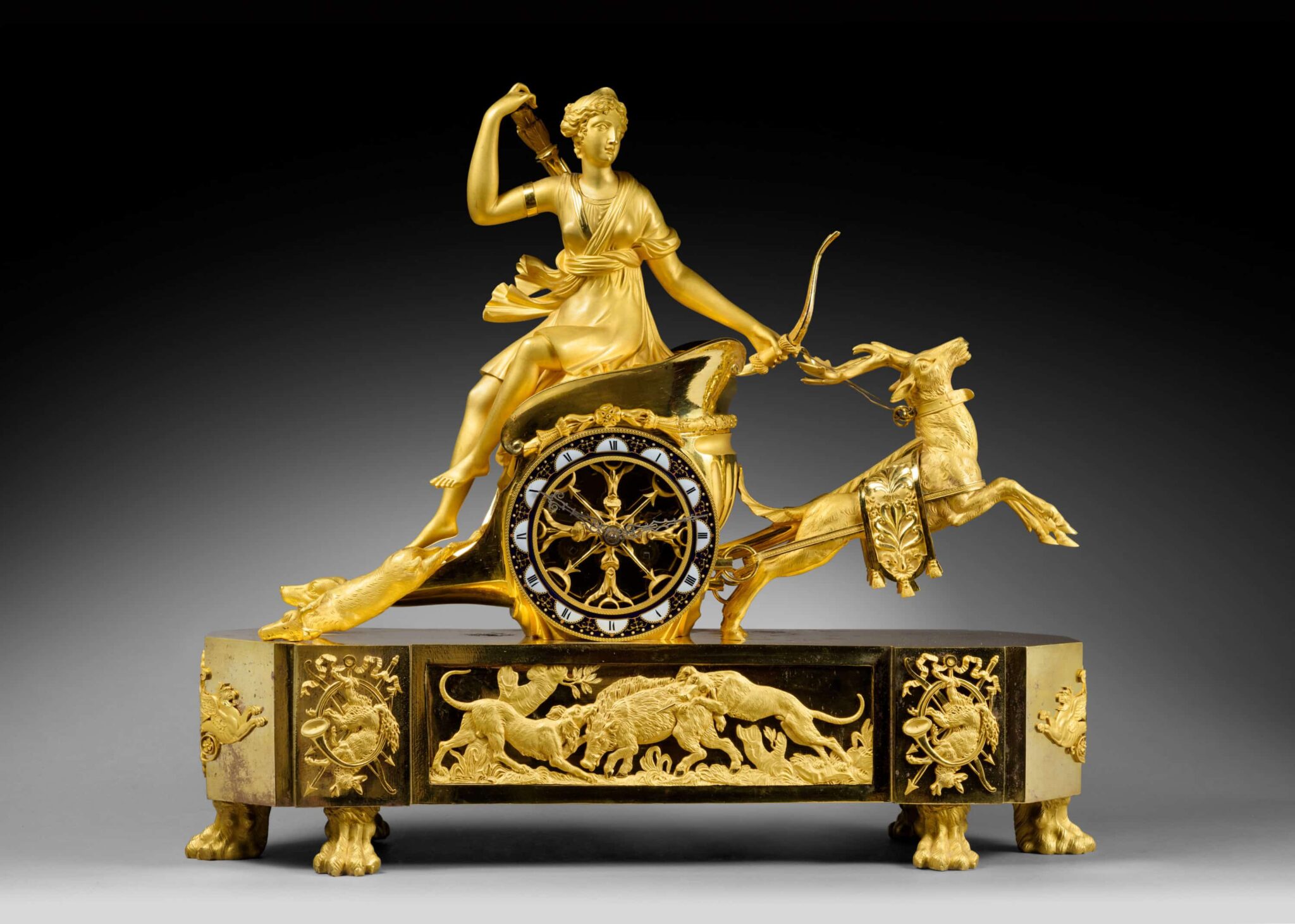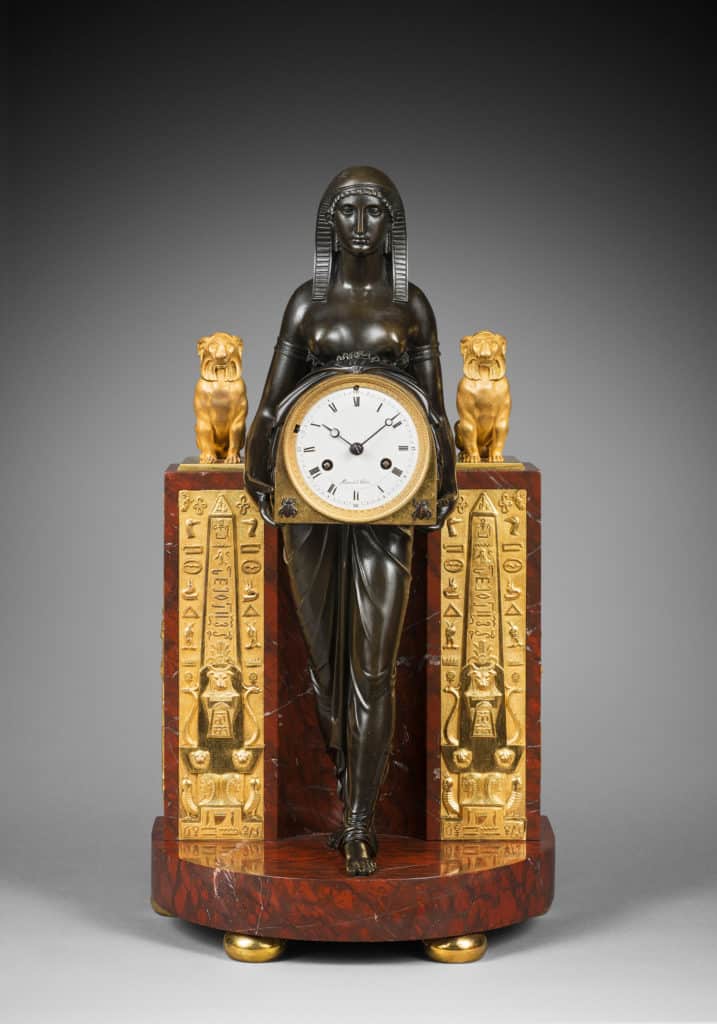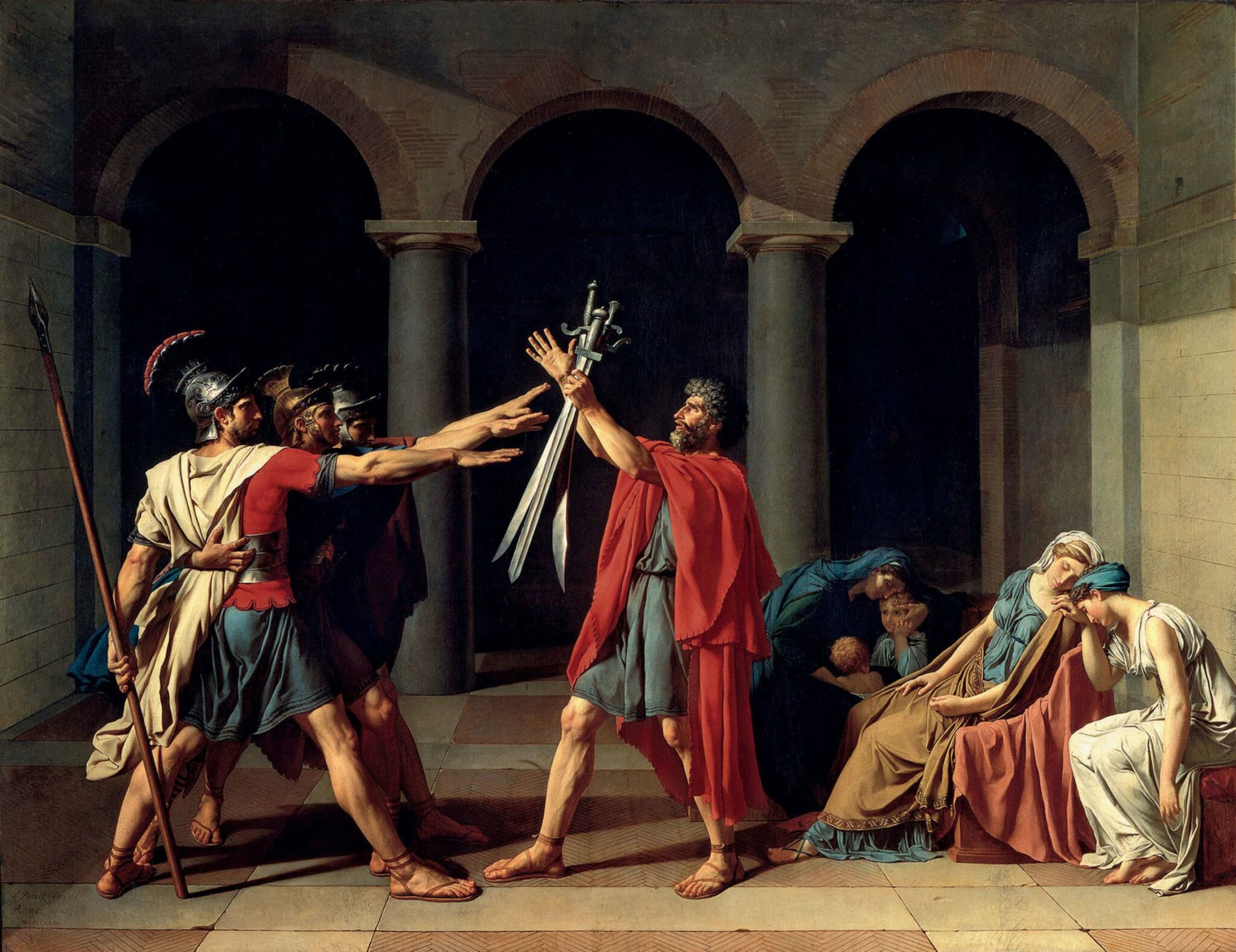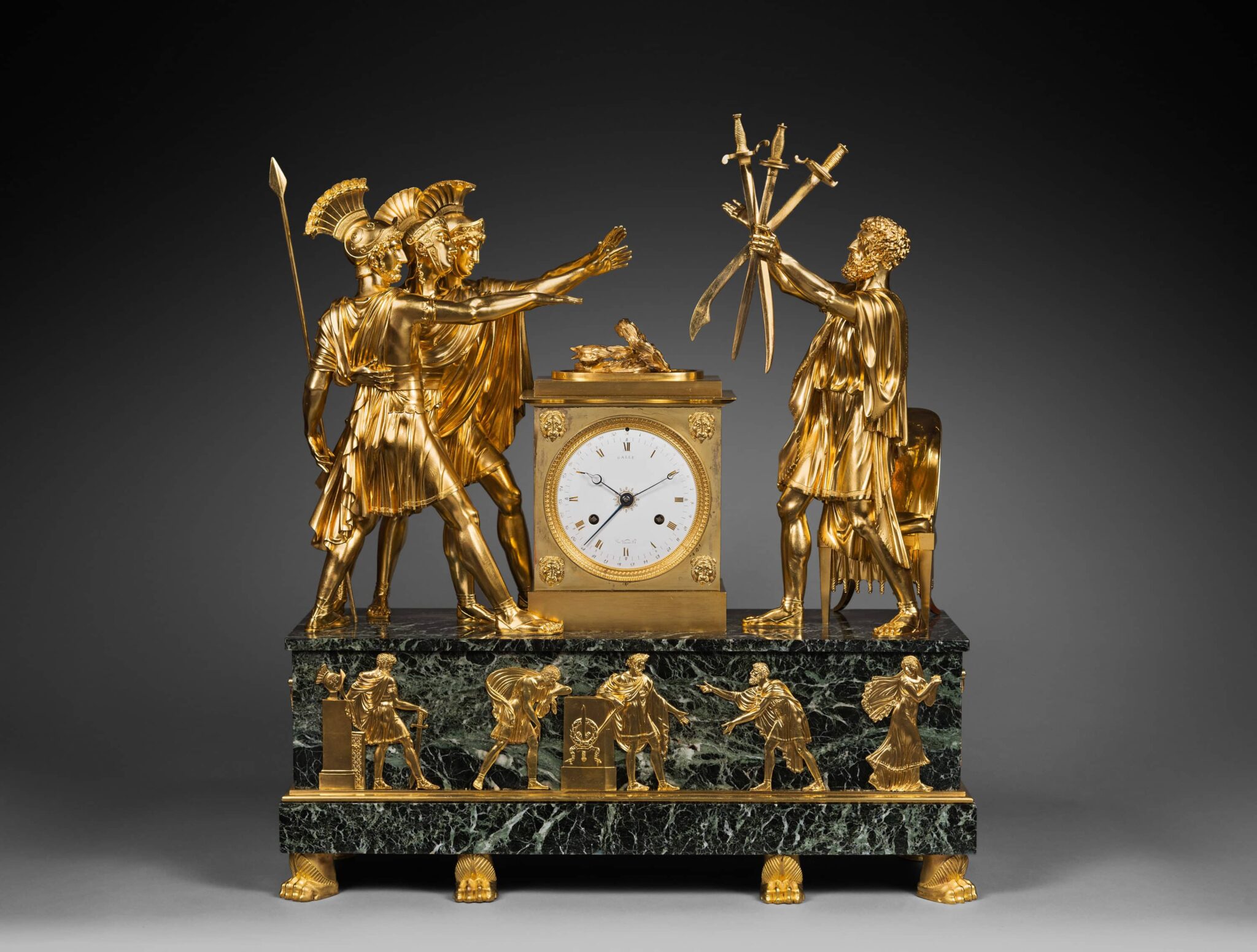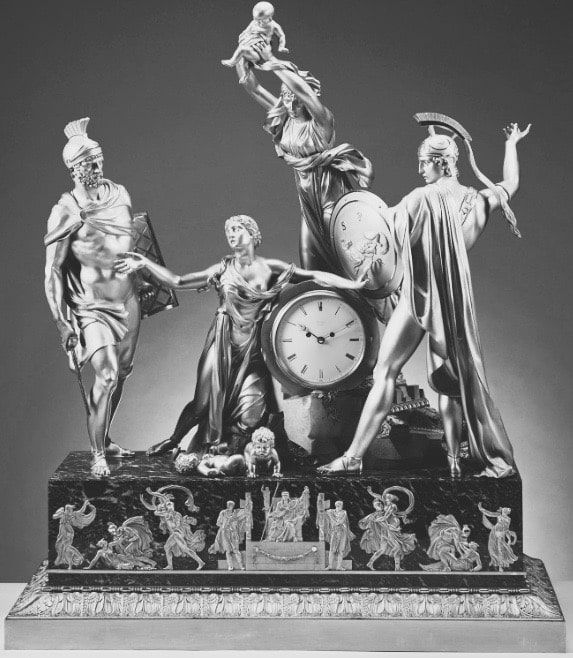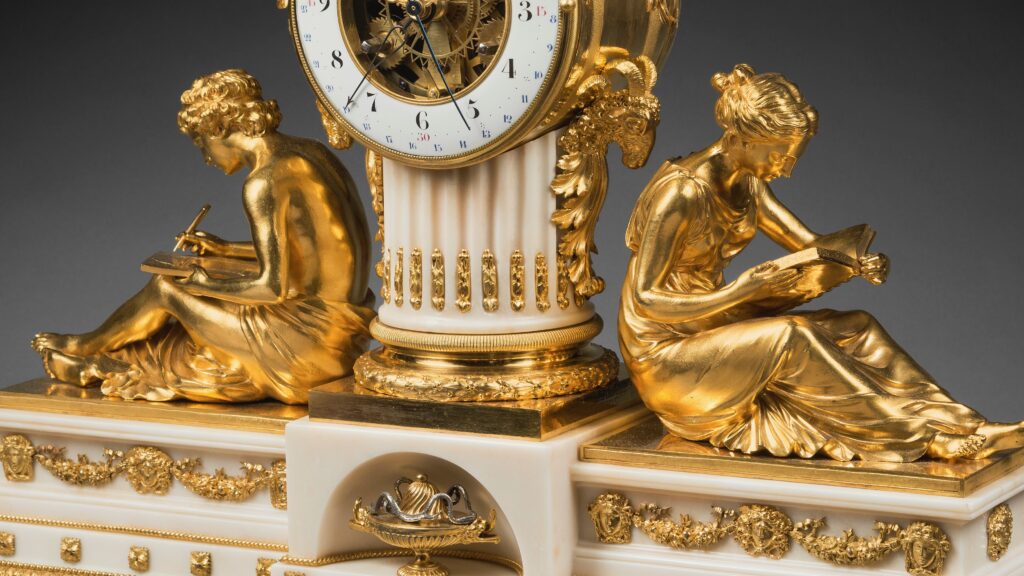Although he was the last king of the ancien régime in France, aristocratic life during the reign of Louis XVI (1774-1792) was marked by an unheard-of refinement and elegance. Horological creations were particularly remarkable for their tasteful design, precious materials and flawless execution. These creations are the remaining vestiges of the splendour of Versailles, which was brought to an abrupt end by the French Revolution, and which are often symbolized by the tragic fate of Queen Marie Antoinette.
In this article, La Pendulerie invites you to explore some of the most beautiful clocks of the Louis XVI period.
An Allegory of Study
During the whole of the 18th century, Paris was reputed for its elegant salons where aristocrats and lovers of literature from all over Europe gathered to discuss art, science and philosophy. This trend resulted in frequent references to Knowledge or Study, which became common in learned conversations.
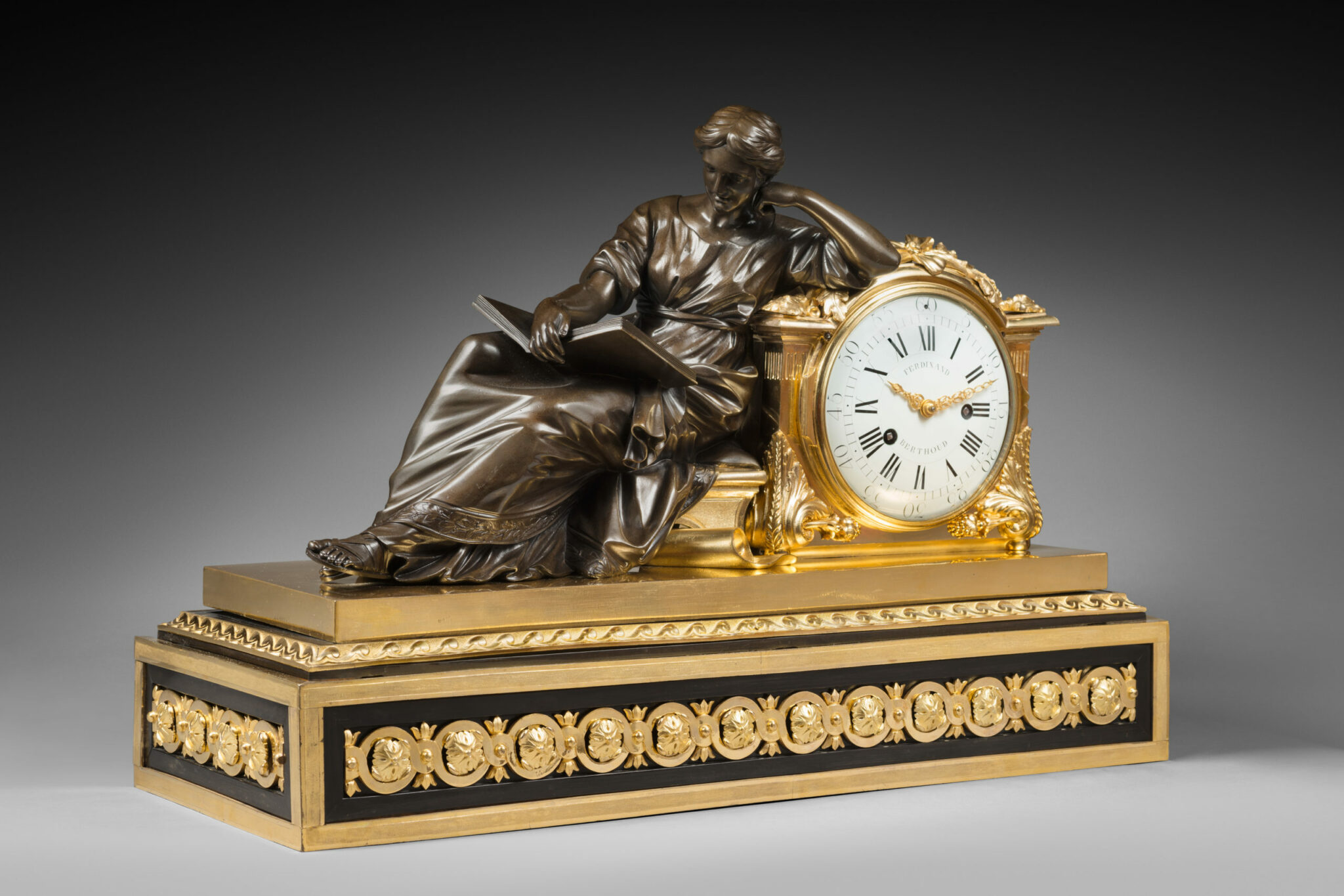
The very first “Study” clocks were indeed linked to the erudite society of Parisian salons. These clocks are now commonly known as the “Geoffrin” model, as their original design was created at the request of Madame Geoffrin (1699-1777), an influential Parisian hostess who regularly held salons.
The “Geoffrin” clock was so fashionable that several examples entered the royal collections in France, Spain, and Sweden. The figure of a seated woman who was concentrating on her reading would serve as a prototype for other representations of the allegory of Study over the following decades.
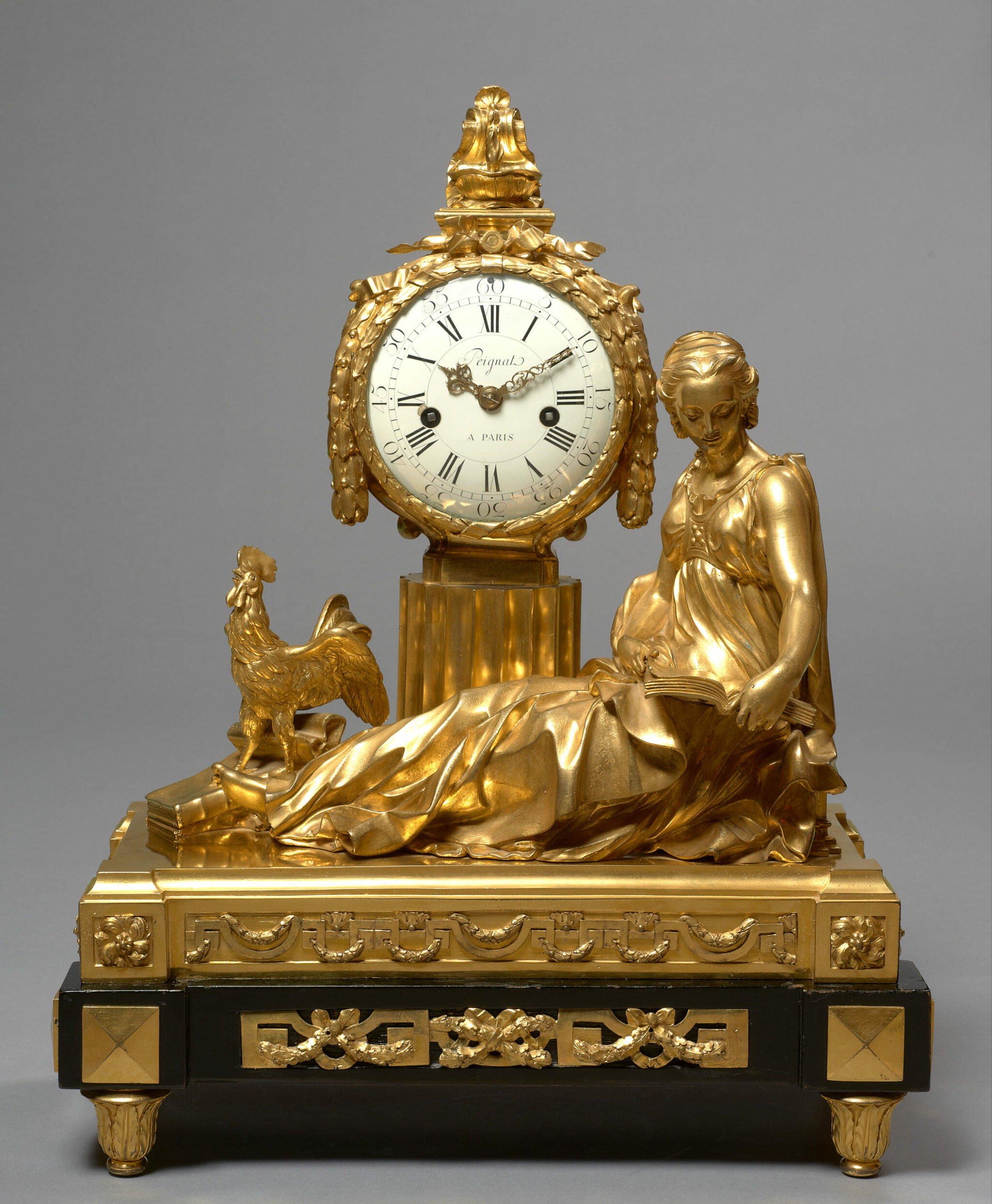
During the reign of Louis XVI, the Parisian bronze caster François Rémond (1747-1812) created a particularly ingenious design. It was based on two figures modelled in 1776 by the French sculptor Louis-Simon Boizot for the Sèvres Royal Manufactory, of which two examples in bisque are now in the Victoria & Albert Museum in London. Rémond cast these figures in bronze and placed them on either side of the dial, achieving a perfectly balanced composition, as may be seen in his preparatory drawing.
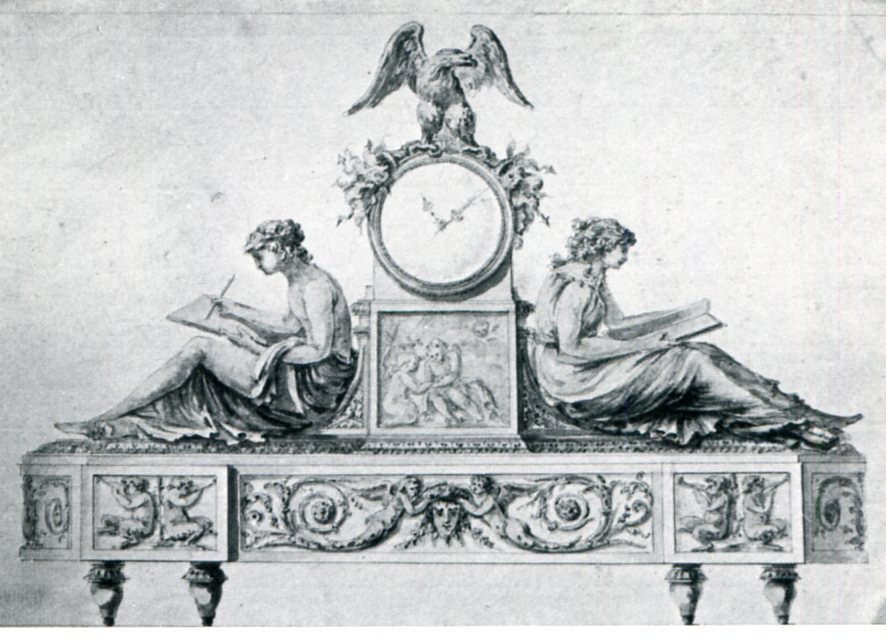
Produced from 1784 on, Rémond’s model was commercialised by Dominique Daguerre, a merchant of luxury goods who maintained an excellent working relationship with European royal courts. Louis XVI himself acquired two “Study” clocks for the Château de Saint-Cloud in 1788, while King George IV of England owned three examples.
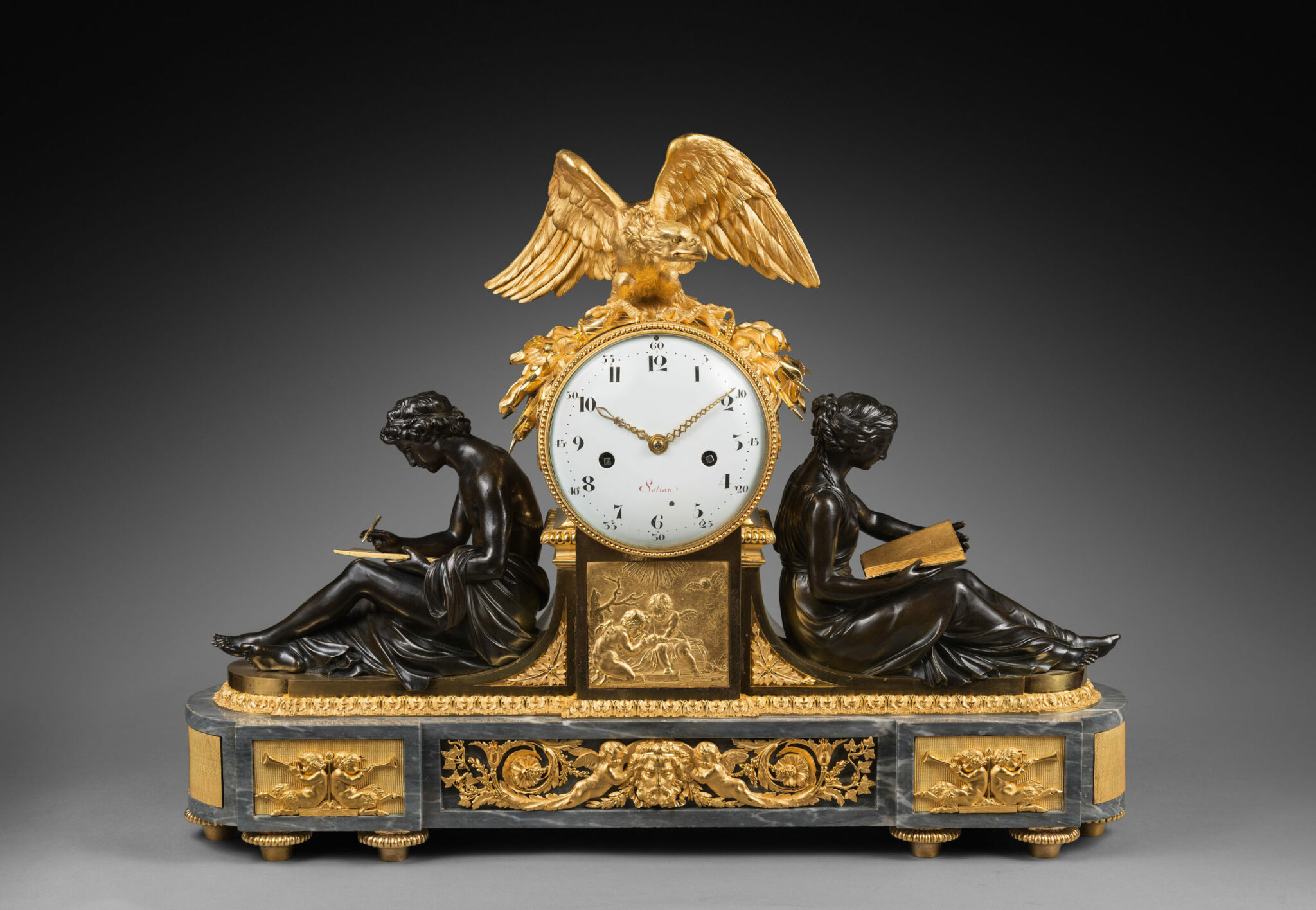
Having benefited from the phenomenal success of the “Geoffrin” model, Rémond’s “Study” clocks remained popular until the Restoration period, that is, the 1830s. Certain variants were produced – sometimes quite unique in their treatment of decorative details – at the request of those who commissioned them.
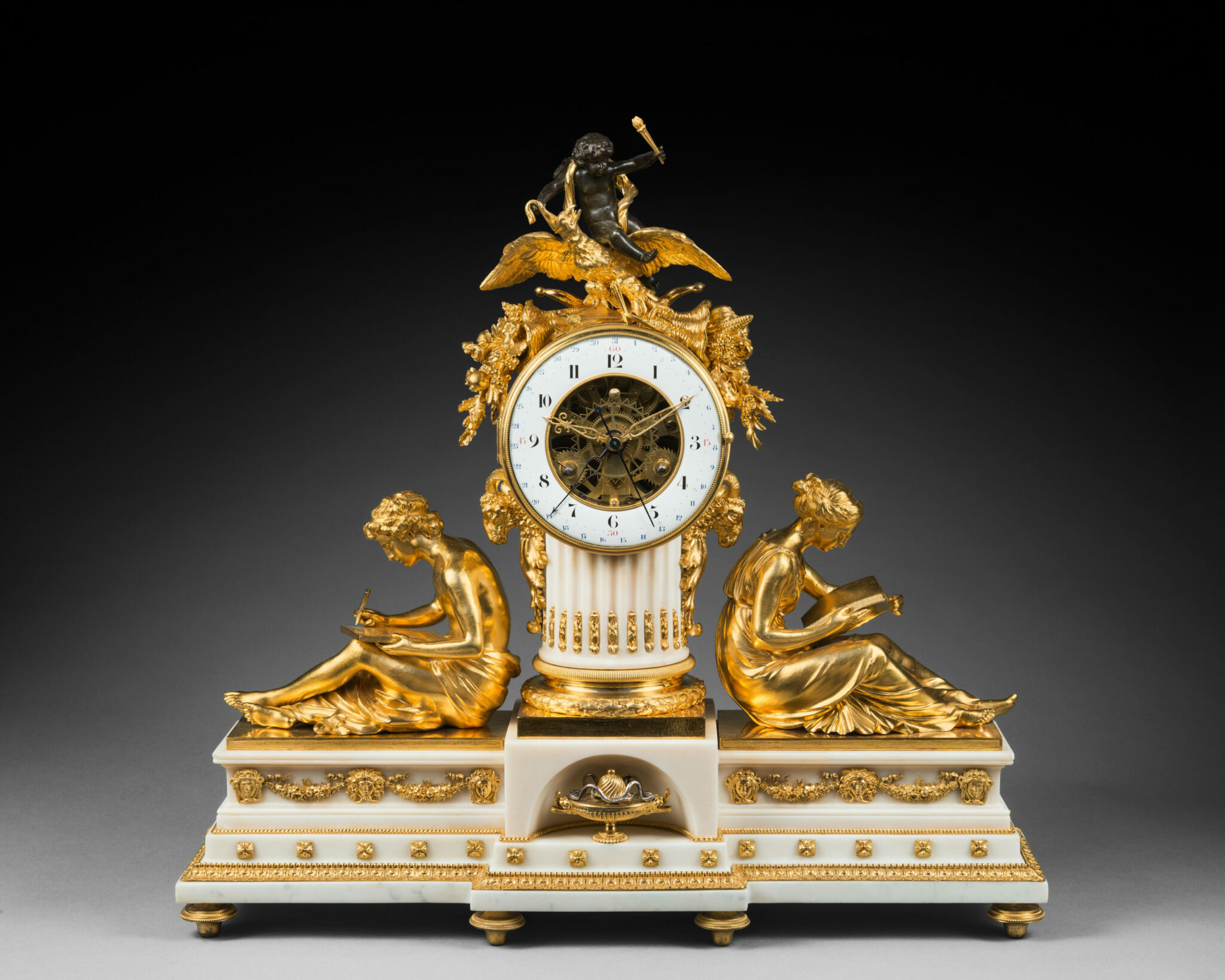
Cercles tournants
Cercles tournant clocks (cercles tournants means “rotating rings” in French) are a specific type of Neoclassical clock that features annular dials that rotate horizontally around the case. They were best suited to vase-form marble or gilt bronze cases inspired by classical antiquity, which had recently come into fashion due to archaeological discoveries at Pompeii and Herculaneum.
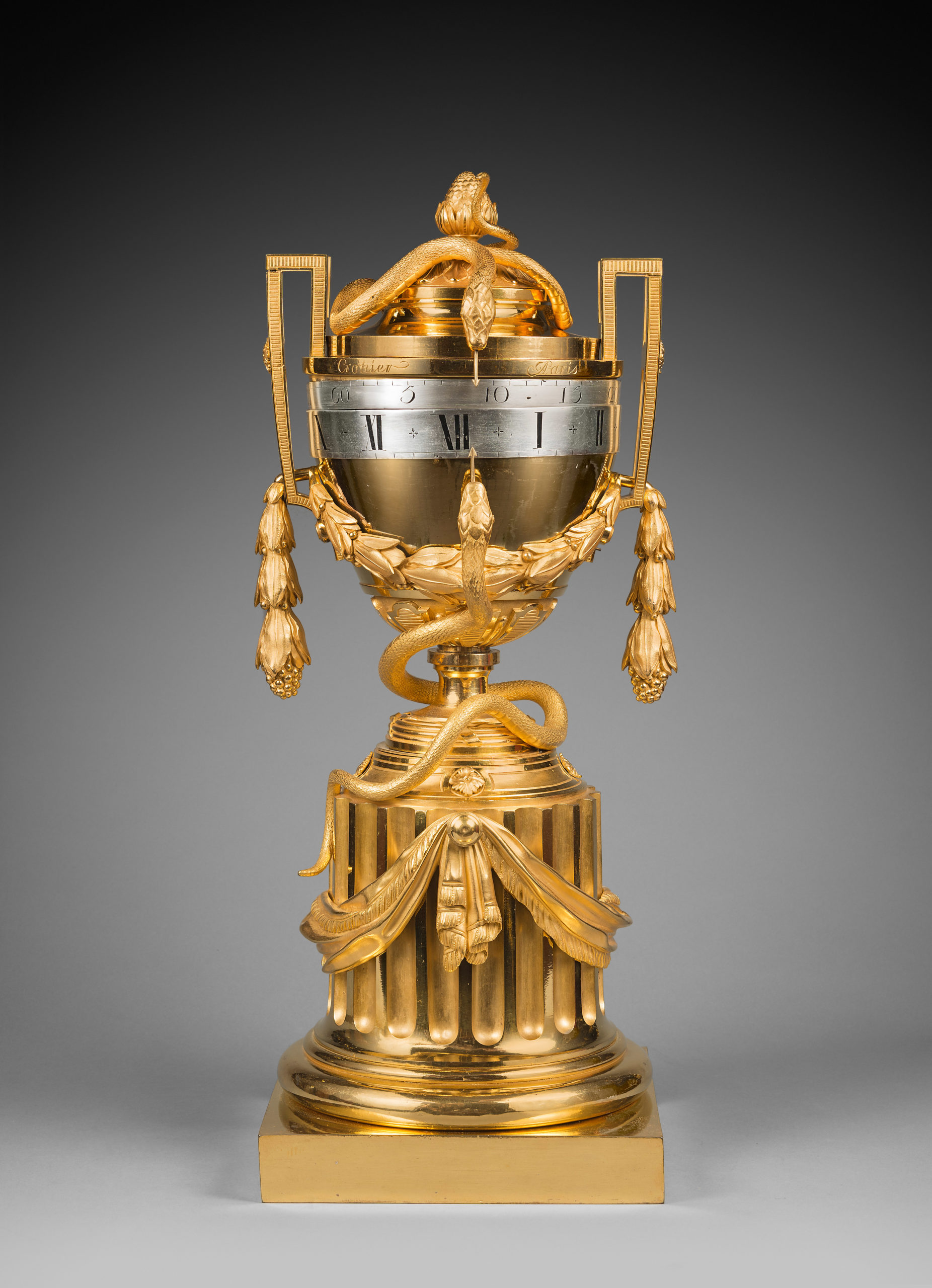
In 1778, French architect Richard Mique erected a remarkable folly representing the temple of Love in the newly created English garden at Petit Trianon, the domain of Marie Antoinette. This construction was unanimously admired by contemporaries and was imitated in several horological creations, thus adding new types of cercles tournants clocks.
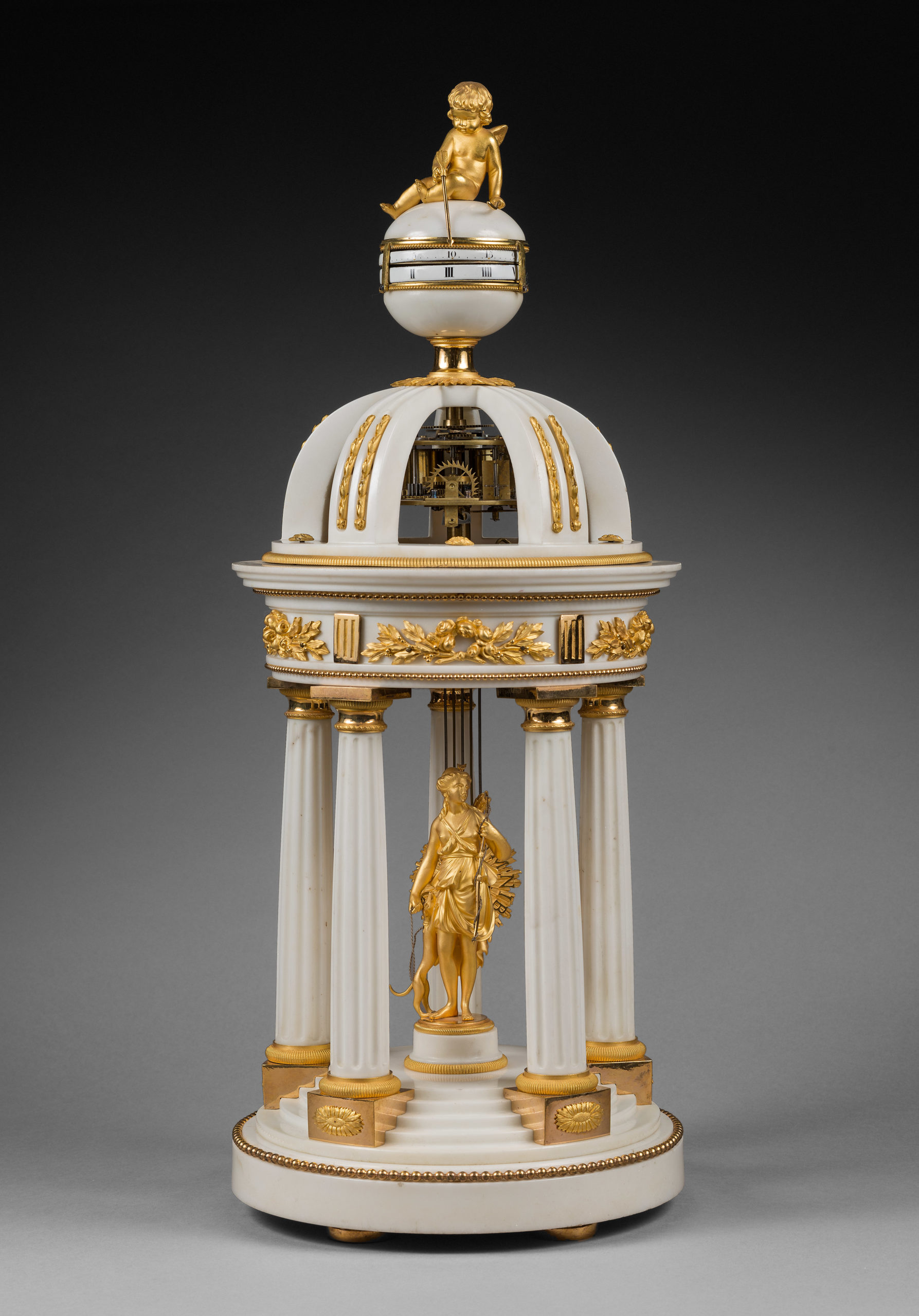
Due to their unusual movements and easily recognizable style, cercles tournants clocks became highly fashionable in the late 18th century, as every influential collector wanted to have at least one in his home. Some collectors commissioned exclusive and personalized pieces, as was the case for Elisabeth Auguste (1721-1794), Electress of Bavaria and Electress Platine of the Holy Roman Empire, who had her coat of arms included in the design.

Lyre Clocks
The lyre, a musical instrument emblematic of the Greek poets, is associated with Apollo, the protector of the arts and leader of the Muses. This iconography was very much in harmony with the codes of the elegant and erudite French aristocracy during the 18th century.
Lyre clocks are very distinctive, with their open cases through which one may admire the beauty of the mechanical movement. Clockmakers of the time managed to take full advantage of the lyre form by making the instrument’s cords a part of the compensating pendulum.
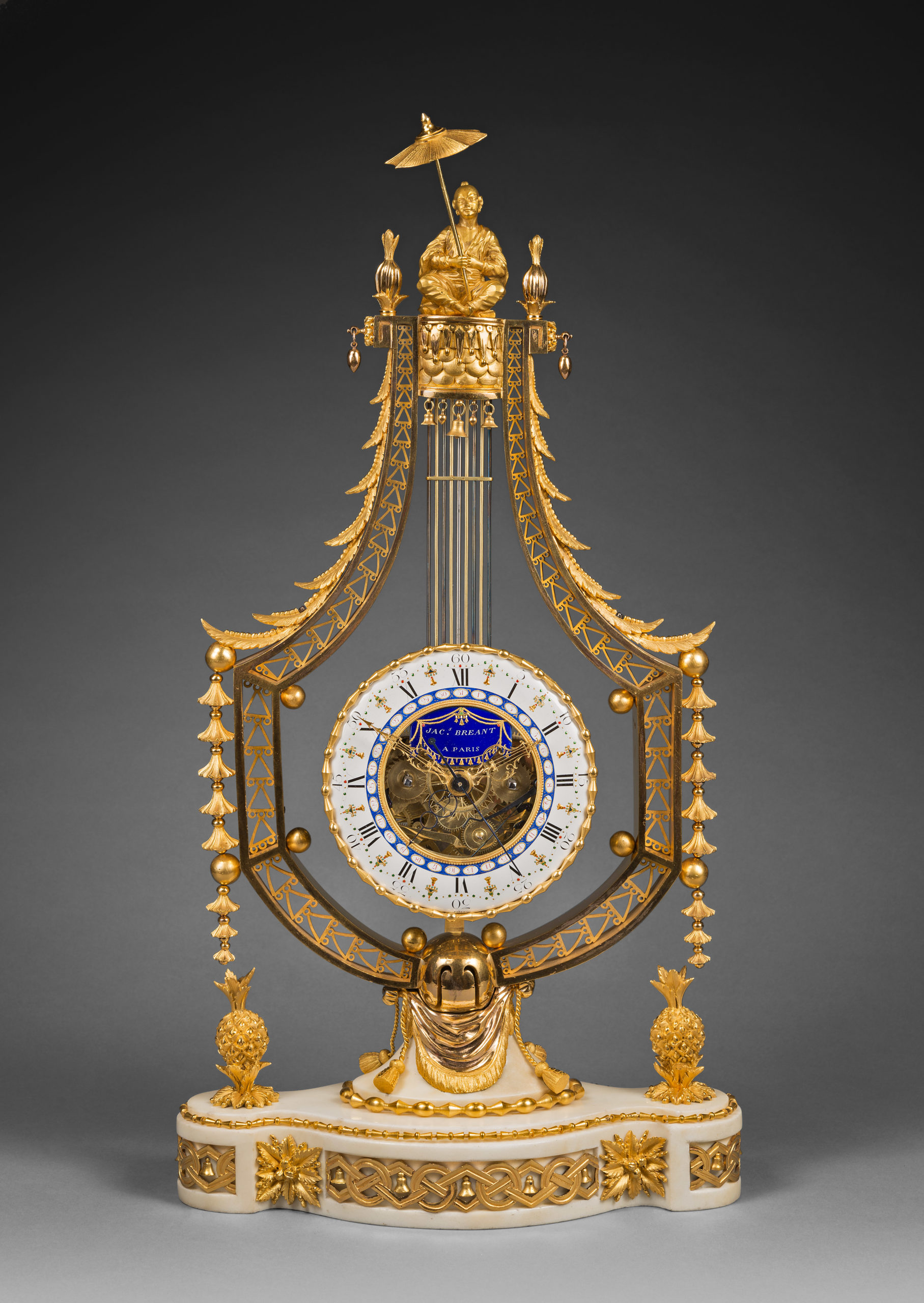
A luxurious type of lyre clock, with a porcelain case, was created in 1785 by the Sèvres Royal Manufactory. Two of the first examples were presented to Louis XVI in 1785/86; the king acquired them for the Versailles Palace. Although both were sold during the French Revolution, one was eventually returned to its original location in the Salon des Jeux. Given the high cost of production and the exacting qualitative requirements, porcelain lyre clocks were almost exclusively reserved for royals and their inner circle.
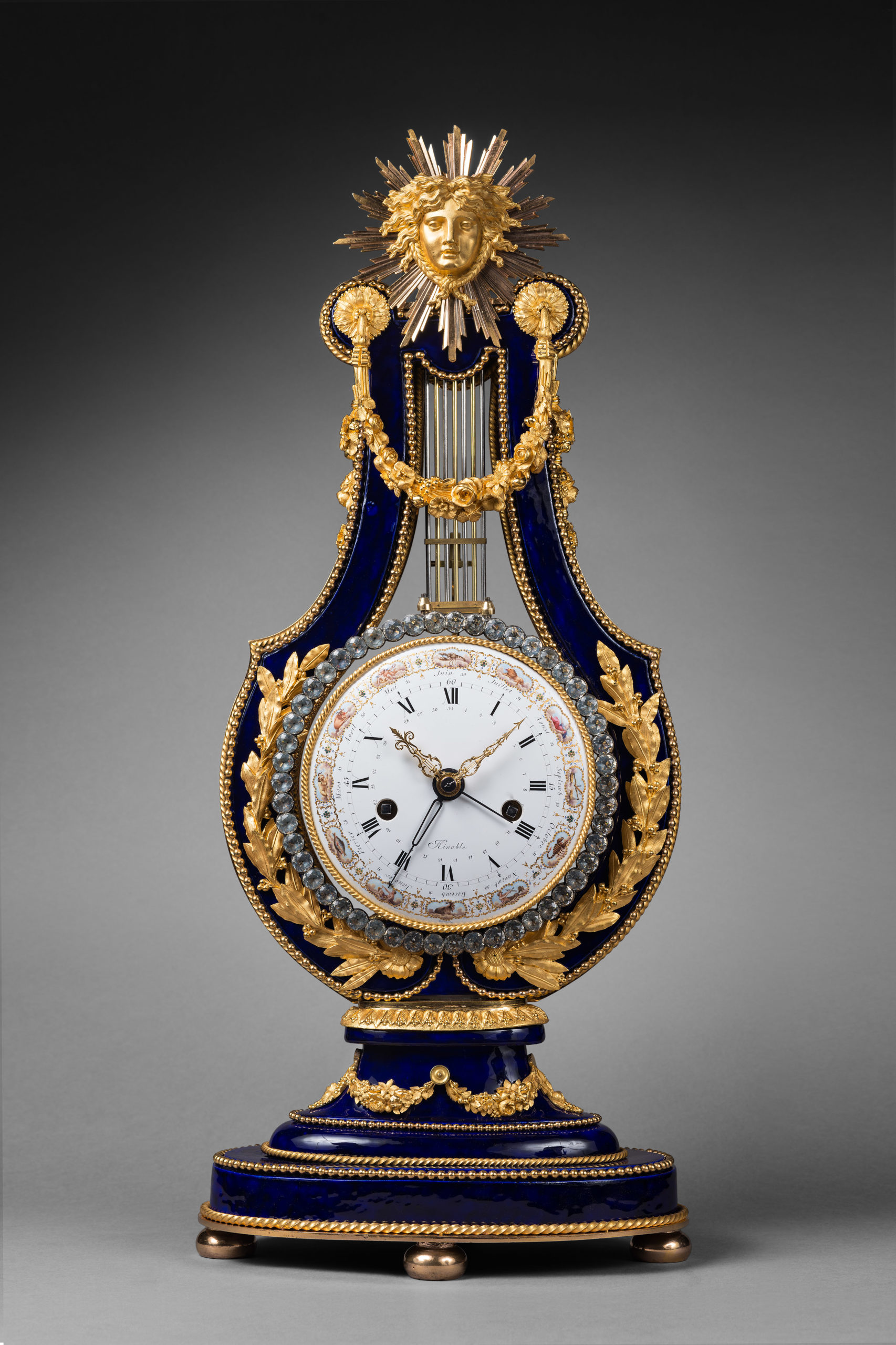
Dieudonné Kinable was a clockmaker who specialised in movements for porcelain lyre clocks, as he purchased the greatest number of cases from Sèvres. Some of his creations even crossed the English Channel; some of them are today in the Royal British Collection and the Victoria & Albert Museum.
Y. Huang
